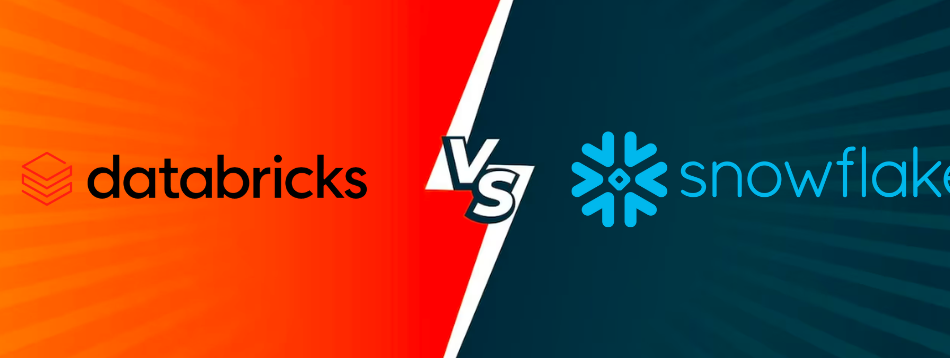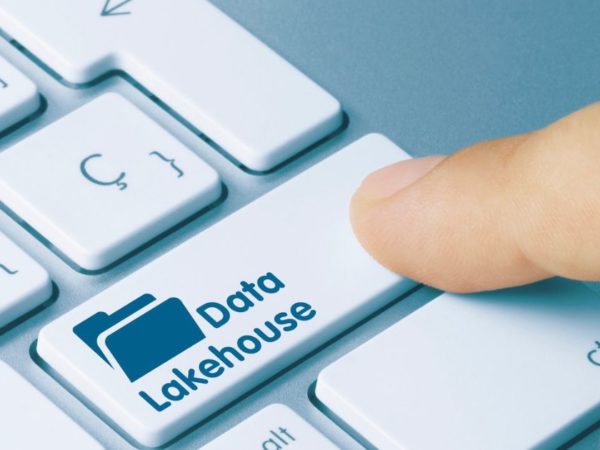If you have dabbled in data science in recent times, you might have heard of Snowflake and Databricks and how they compare against each other.
If you are unsure exactly what these tools are and which one you should use, then you are in the right place. This article will cover what they are, compare them and recommend each one for the use case it works best.
What is Databricks?
Databricks is a comprehensive data platform that extends Apache Spark. It was created by the creators of Apache Spark and used by some of the biggest companies like HSBC, Amazon, etc.
<img alt="YouTube video" data-pin-nopin="true" data-src="https://kirelos.com/wp-content/uploads/2023/02/echo/maxresdefault.jpg63ec9d1247dad.jpg" height="720" nopin="nopin" src="data:image/svg xml,” width=”1280″>
As a platform, Databricks provides a means to work with Apache Spark, Delta Lake, and MLFlow to help clients clean, store, visualize and use data for machine learning purposes.
It is open-source software, but a cloud-based managed option is available as a subscription service. Like Snowflake, It follows the lakehouse architecture that combines the benefits of Data Warehouses and Data Lakes.
Also read: Data Lake vs. Data Warehouse: What are the Differences?
What is Snowflake?
Snowflake is a cloud-based data warehousing system. It runs as a pay-per-use service where you are billed for the resources that you use.
<img alt="YouTube video" data-pin-nopin="true" data-src="https://kirelos.com/wp-content/uploads/2023/02/echo/maxresdefault.jpg63ec9d1255e39.jpg" height="720" nopin="nopin" src="data:image/svg xml,” width=”1280″>
One of the selling points of Snowflake is that billing of computing and storage are separated. This means companies that require lots of storage but little computing do not have to pay for the computing power they do not need.
The platform also includes a custom SQL query engine designed to run natively on the cloud. Snowflake runs on top of the popular cloud providers: Google Cloud, Amazon AWS, and Microsoft Azure.
Similarities Between Snowflake and Databricks
Both Databricks and Snowflake are data lakehouses. They combine the features of data warehouses and data lakes to provide the best of both worlds in data storage and computing.
They decouple their storage and computing options, so they are independently scaleable. You can use both products to create dashboards for reporting and analytics.
Differences Between Snowflake and Databricks
| Aspect | Databricks | Snowflake |
| Architecture | Databricks uses a two-layered architecture. The bottom layer is the Data Plane. The primary responsibility of this layer is to store and process your data. The storage is handled by the Databricks File System Layer that sits on top of your cloud storage– either AWS S3 or Azure Blob Storage. A cluster managed by Apache Spark handles the processing. The top layer is the Control Plane layer. This layer contains workspace configuration files and Notebook commands. |
Snowflake’s architecture can be thought of as having three layers. At the base layer is the Data Storage Layer. This is where data resides. The Query Processing Layer is the middle layer. This layer is made up of “virtual warehouses”. These virtual warehouses are independent compute clusters of different compute nodes that compute queries. The top layer is made up of Cloud Services. These services manage and bring together the other parts of Snowflake. They handle functions like authentication, infrastructure management, metadata management, and access control. |
| Scalability | Databricks scale automatically based on load by adding more workers on clusters while reducing workers on underutilized clusters. This ensures that workloads run quickly. | Snowflake automatically scales up or down computing resources to perform different data tasks such as loading, integrating, or analyzing data. While node sizes cannot be changed, clusters can easily be resized up to 128 nodes. In addition, Snowflake automatically provides additional compute clusters when one cluster is overwhelmed and balances the load between the two clusters. Storage and computational resources scale independently. |
| Security | With Databricks, you can create a Virtual Private Cloud with your cloud provider to run your Databricks platform. This allows you to have more control and manage access from your Cloud provider. In addition, you can use Databricks to manage public access to cloud resources through network access control. You can also create and manage encryption keys for additional security. For API access, you can create, manage and use Personal Access Tokens. |
Snowflake offers similar security offerings to those of Databricks. This includes managing network access through IP filters and blocklists, setting idle user session timeouts for when someone forgets to logout, using strong encryption (AES) with rotated keys, role-based access control to data and objects, multi-factor authentication when signing in and single sign-on through federated authentication. |
| Storage | Databricks store data in any format. The Databricks platform focuses mostly on data processing and application layers. As a result, your data can reside anywhere – on the cloud or on-premises. |
Snowflake stores data in a semi-structured format. For storage, Snowflake manages its data layer and stores the data in either Amazon Web Services or Microsoft Azure. |
| Integrations | Databricks integrates with the most popular integrations for data acquisition. | Snowflake also integrates with these popular data acquisition integrations. Snowflake, being the older tool, has historically had most tools built for it. |
Use Cases for Databricks
Databricks are most useful when carrying out Data Science and Machine learning tasks such as predictive analytics and recommendation engines. Because it is extensible and can be fine-tuned, it is recommended for businesses that handle larger data workloads. It provides one platform for handling data, analytics, and AI.
Use Cases for Snowflake
Snowflake is best used for Business Intelligence. This includes using SQL for data analysis, reporting on the data, and creating visual dashboards. It is good for data transformation. Machine Learning capabilities are only available through additional tools such as Snowpark.
Final Words
Both platforms have their strengths and different feature sets. Based on this guide, it should be easier to pick a platform that fits your strategy, data workload, volumes, and needs. Like most things, there is no right or wrong answer, just one that works best for you.
Next, check out good resources to learn Big Data and Hadoop.



